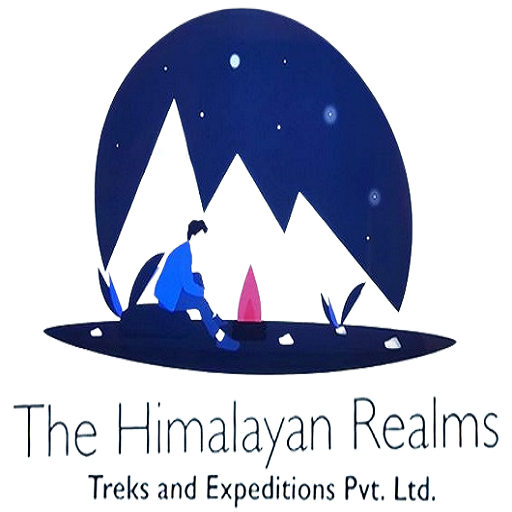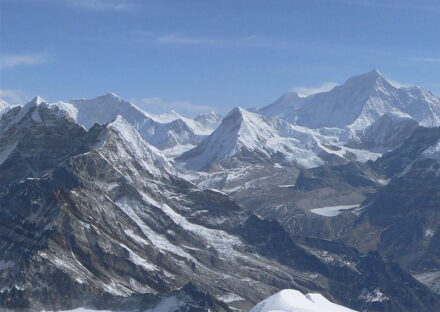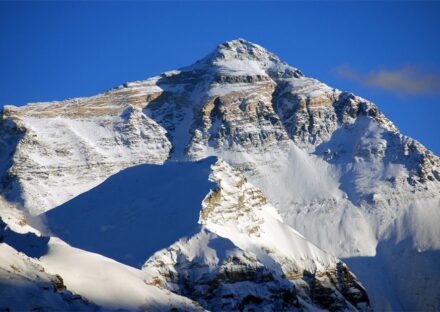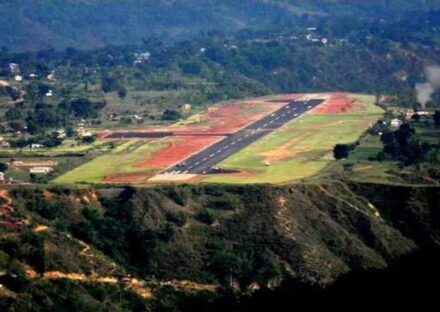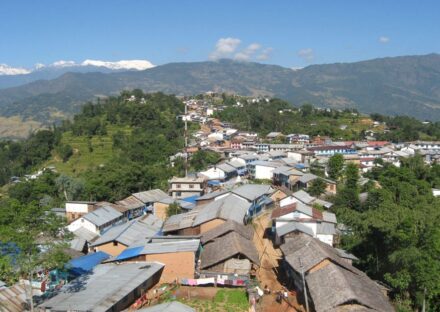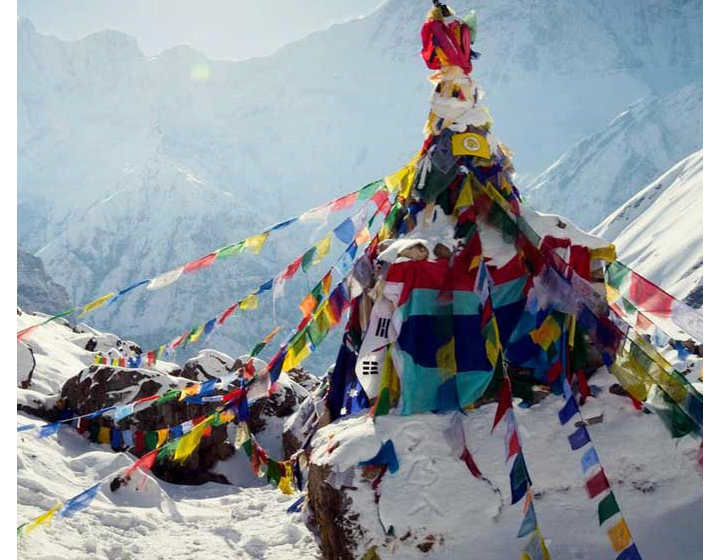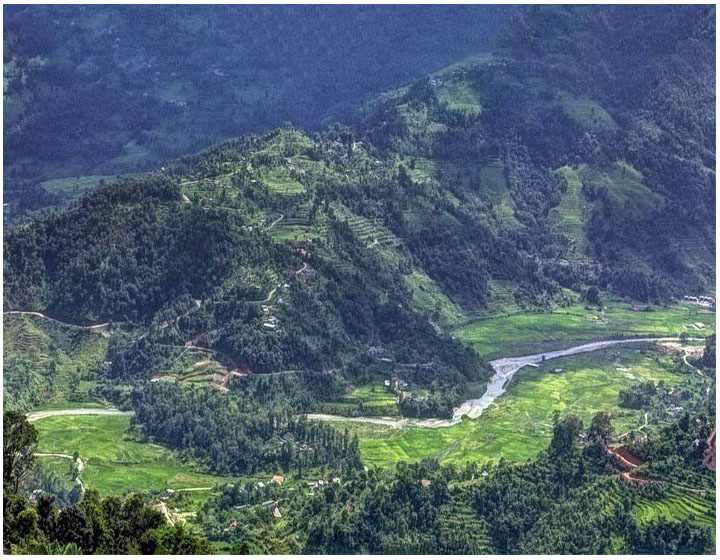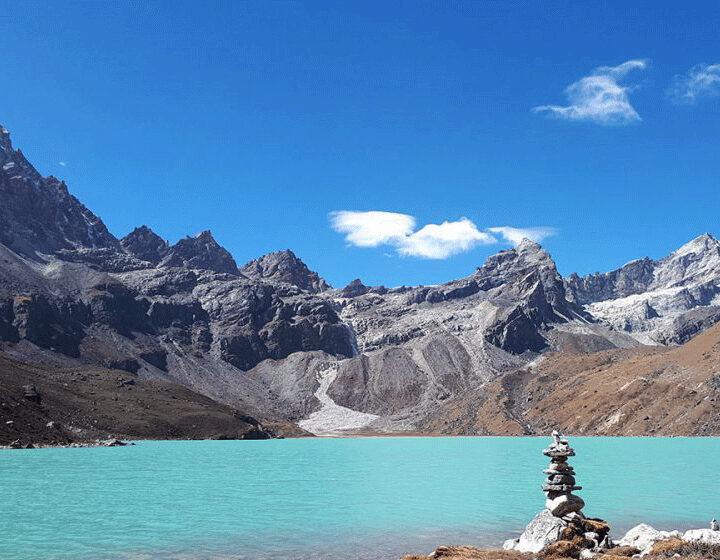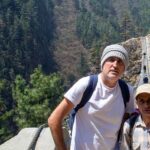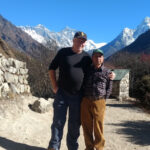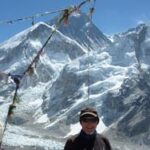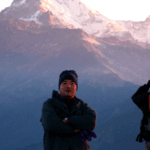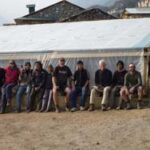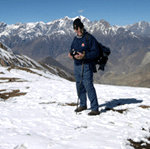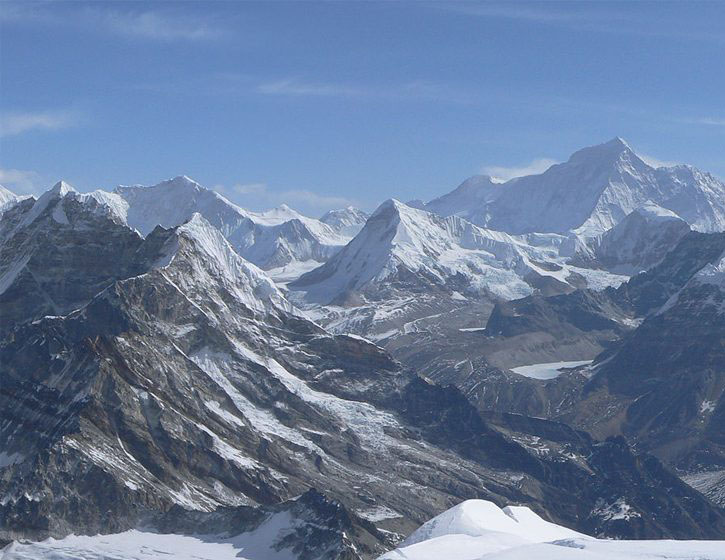
Trip overview

Overview: Makalu Base Camp 23-days
Trek The Makalu Base Camp Trek is a journey into one of Nepal’s most untouched and spectacular trekking regions. Located in the eastern Himalayas, this 16-day itinerary offers trekkers an unforgettable experience of towering mountains, remote villages, rich biodiversity, and authentic Himalayan culture. The trek leads you to the base of Mt. Makalu (8,481m), the fifth-highest mountain in the world, situated within the pristine Makalu Barun National Park.
This Makalu Base Camp adventure is perfect for seasoned trekkers looking to explore beyond the popular Everest and Annapurna regions, as it offers solitude, raw wilderness, and breathtaking alpine beauty.
High-Altitude Terrains and Snow-Covered Landscapes
The Makalu Base Camp trail ascends through a variety of landscapes—from lush subtropical forests and terraced farmland to high alpine meadows and glaciers. As you climb above 4,000 meters, the environment becomes harsher but more majestic, with snow-covered peaks surrounding you on all sides. The trail reaches a high point at Makalu Base Camp (4,870m), where trekkers are rewarded with views of not only Mt. Makalu but also Everest, Lhotse, Chamlang, and Baruntse. Expect to encounter glaciers, icy streams, and high passes, with constantly shifting weather adding to the drama of the setting.
Immersing in the Himalayan Lifestyle
The Makalu Base Camp is One of the highlights of this trek is the opportunity to live alongside local people. The lower villages are inhabited primarily by Rai and Limbu communities, while higher settlements feature Sherpa influences. Staying in teahouses or family-run lodges provides cultural immersion as you share meals, stories, and local customs. The trek is a chance to disconnect from urban life and experience a slower, nature-focused rhythm of life, shaped by agriculture, religion, and community cooperation.
Makalu Barun National Park and Conservation Area
Established in 1992, Makalu-Barun National Park spans over 2,300 square kilometers and is one of the most biologically rich protected areas in the Himalayas. The park is home to more than 3,000 species of flowering plants, 400 species of birds, and 75 species of mammals, including red pandas, snow leopards, musk deer, and Himalayan black bears. The trek through the park transitions from temperate forests filled with rhododendron and bamboo to alpine tundra near the base camp.
Makalu and Chamlang Himal Peaks
Dominating the skyline are Mt. Makalu and Chamlang Himal. Mt. Makalu, a stunning pyramid-shaped peak, is considered one of the most technically difficult 8,000-meter climbs. Chamlang (7,319m) lies to the southwest and adds dramatic flair to the skyline. From Makalu Base Camp, the views are awe-inspiring, particularly at sunrise when the peaks catch fire with golden light.
Diverse Culture of Makalu Barun Valley
The Makalu Base Camp trek traverses a region where different ethnic groups have preserved their traditional lifestyles for centuries. You’ll encounter Sherpa communities known for their Tibetan Buddhist traditions, prayer flags, mani walls, and chortens, as well as Rai villages where animistic and Hindu influences coexist. Festivals, songs, dances, and agricultural practices add rich cultural textures to your journey.
Tea House Accommodations and Cuisine
Despite the remote nature of the route, basic teahouse accommodation is available in most villages. While amenities are limited compared to the Annapurna or Everest regions, meals are freshly prepared and hearty. Dal bhat, Tibetan bread, potatoes, and noodle soups are staples, often served with local vegetables or yak cheese. Some lodges may offer momos, thukpa, or even a local brew made from millet or barley.
Similarities to the Kanchenjunga Trek
Much like the Kanchenjunga trek, the Makalu Base Camp route offers unparalleled wilderness, cultural depth, and remoteness. Both treks are suitable for trekkers who enjoy solitude and pristine nature. You’ll experience similar vegetation zones, high mountain views, and limited human impact, which makes them both excellent alternatives to crowded trails.
Makalu Base Camp Trek Cost
A full package with flights, permits, a guide, a porter, meals, and accommodation typically ranges from USD 32,900 to 2,095. The final price depends on your group size, time of year, and the service provider. This trek requires two key permits: the Makalu Barun National Park Permit and a trekking permit for restricted areas, especially for sections between Num and Yangla.
Travel Style
This is a moderate to strenuous lodge-based trek. Daily walking hours range from 5 to 8 hours, with steep ascents and descents. Porters carry the heavy gear, allowing you to enjoy the walk with a light daypack. Your guide ensures safety, handles logistics, and offers cultural interpretation throughout the trek.
Key Features
- Remote and unspoiled wilderness trail
- Glacier walks and panoramic views of Everest and Makalu
- Ethnic diversity and cultural interaction
- Protected area rich in biodiversity
- Dramatic elevation gains from 700m to nearly 5,000m
Who Should Choose This Trek?
The Makalu Base Camp Trek is ideal for experienced trekkers seeking remote trails, cultural authenticity, and dramatic Himalayan landscapes. It suits fit adventurers, nature lovers, and photographers looking for solitude, biodiversity, and raw wilderness.
Advantages
The Makalu Base Camp Trek offers trekkers a truly remote and wild Himalayan experience. Unlike more commercial routes, it sees far fewer visitors, providing peace, solitude, and an authentic connection to nature. The trail takes you through the heart of the Makalu Barun National Park, home to rare wildlife, lush forests, and dramatic alpine scenery. Cultural encounters with Rai, Sherpa, and Limbu communities enrich the journey with meaningful local interaction. The trek also rewards you with magnificent views of Mt. Makalu, Chamlang, and even distant Everest and Lhotse. The diversity in landscapes—from subtropical valleys to glacial highlands—keeps the route visually captivating. For seasoned adventurers, the physical challenge, altitude, and remoteness offer a deep sense of accomplishment. Supported by expert guides and porters, this trek is ideal for those who seek adventure, beauty, and cultural richness away from the beaten path.
Link to the Great Himalayan Trails
The Makalu Base Camp Trek is part of the Great Himalayan Trail (GHT)’s eastern section. Ambitious trekkers can connect it with routes to Everest or Kanchenjunga, creating a longer trans-Himalayan expedition. It’s a vital link in one of the world’s longest and highest trekking networks.
Best Times to Trek
The ideal trekking periods are
Spring (March to May): Rhododendrons bloom, and the weather is warm at lower altitudes.
Autumn (October to November): Best visibility, stable weather, and dry trails.
Seasons Overview
Winter (Dec–Feb): Cold with heavy snow; not ideal for high-altitude sections.
Monsoon (June–Sept): Landslides and slippery trails make it risky.
Spring/Autumn: The best combination of safety, views, and comfort.
Challenges and Considerations
Limited communication and medical facilities
Altitude sickness risks above 3,500m
Flight delays to Tumlingtar due to weather
Physical fitness and mental stamina required
Adventure and Experience
The Makalu Base Camp Trek is not just a physical journey—it’s a spiritual and emotional one. It immerses you in ancient cultures, tests your resilience, and rewards you with unparalleled natural beauty. It’s a life-defining trek for those who seek more than just a vacation.
Expert Guidance
Your trek will be led by trained, government-licensed guides who have firsthand knowledge of the terrain, language, and customs. Porters are well-equipped and fairly compensated. All safety protocols are followed, including emergency evacuation planning.
Acclimatization
The Makalu trek itinerary includes proper acclimatization days, particularly around Tashigaon and Khongma Danda, helping your body adjust to altitude and reducing the risk of AMS (acute mountain sickness). Hydration, slow ascents, and experienced guides ensure your safety throughout the trek.
Note: We guarantee all our departures and customized treks for the Makalu Base Camp Trek to depart on the published dates. If our scheduled dates do not match your travel plans, we are happy to create a customized itinerary to suit your preferred timeline and interests. Let us know the type of experience you are looking for, and our team will help design a trip that will bring your dream Himalayan adventure to life.
Short Itinerary
Itinerary
Arrival in Kathmandu-Transfer to Hotel:-Welcome at the Tribhuvan International Airport and transfer to hotel in Kathmandu, rest at the hotel and briefing about the trip. Overnight accommodation is set with BB Plan.
Kathmandu Sightseeing and Trek Preparation:-Today after breakfast we will start a guided tour to several of the most historical sightseeing in Kathmandu. Some of these are considered World Heritage Sites; including the historic Hanuman Dhoka Durbar Square, the sacred Hindu temple of Pashupatinath, the famous ‘Monkey Temple’ (Swoyambhunath) and Buddhists shrine Bouddhanath the large Stupa within the world. Briefing regarding the trek with two way question answer with the trip leader (The Guide). The overnight accommodation is in the same hotel BB Plan.
Fly to Tumlingtar (518m), Trek to Khadbari (1025m):-This is the beginning day of your trek. In the morning you’ll be transferred to domestic airport fly to Tumlingtar observing range of snow capped peaks from Ganesh Himal to Mt. Everest, Makalu and Mt. Kanchenjunga. We will arrive at Tumlingtar after 40 munities scenic flight. Then we start our adventurous journey with our crew heading upward through the Kumal village to the Khadbari in the midst of the sub-tropical forest of Sal tree (Sorea-Robusta) and more farm fields along the way, as we come to a town of Khadbari a major town of the Makalu region and from Khadbari with up and down walk lead to the camp at Mani Bhanjyang. Rest of the day we explore the town and overnight attended camp or Hotel.
Trek from Khadbari to Chichila (1,800m):-After breakfast, we start our adventure with few flat then ascending to the ridge on a wide and well-used trail, reaching our lunch stop at Bhotebas. Then the trail goes to through fertile land and forested path brings you to the top of the small ridge at Chichila village for the overnight at tent. Where is settled few local houses with superb scenic mountains of Mt. Makalu and Kumbakarna range.
rek from Chichile to Num (1,500m):-Totay our journey leads us through the cool and serene forest of rhododendron, oaks and hemlocks as we climb to the top of the ridge. Then it is almost downhill for two hours to the Num- is a small village with about fifteen houses and a primary school on the large flat ground, where we have good view of our route for the next couple of days from our camp site.
Trek Num to Seduwa (1,493m):- At first, we extremely steep head down and terraced slopes towards the Arun River, nearly 800 meters below. The lower slopes of this narrow valley are densely forested and the paths are quite slippery, after reaching the bottom we cross the suspension bridge across the torrential Arun River. Then we climb back out of the rain forest, reaching our lunch place and further steep climb takes us up to Seduwa a village with a small health post and a primary school. Our camp will set nearby.
Trek Seduwa to Tashi Gaun (2,200m):-After breakfast, we have pleasant easy short walk about 3-4 hours takes you to country side farm villages, again it is gradual trail and an uphill climb for an hour through the millet and rice fields takes you the to the Tashi Gaun. We’ll overnight at camp and rest of the time walk around the village.
Trek Tashi Gaun to Kahuma Danda (3,500m):-Today, we leave the human settlement for our destination. After Tashi Gaun we walk through the refreshing beautiful shade of the rhododendron and oaks forest, then leaving the dense forest coming to a summer pastures with traces of temporary made shepherd huts. From here onwards to Kahuma ridge is strenuous uphill climb, where tree lines also declines for the bushes of rhododendron and juniper. We’ll stay overnight at tented camp with scenic mountain ranges during the moon light.
Trek Kahuma Danda to Mumbuk (3,400m):-This is superb view of snow capped mountains and the surrounding landscapes. Our trek follows a gradual trail with few ups and down pass through the Thulo Pokhari (big pond) and Sano Pokhari (small pond). In the heavy snow fall, the path from here can be quite misleading and it will be difficult to find the trail sometime. We walk further cross the pass of Keke La pass (4230m) Tutu-la (4,200m) where there is a chorten. Then we walk all downhill back to vegetation, a small clearing place for camping in the middle of the woods of pines, hemlock, birch and rhododendrons to reach at Mumbuk for the overnight.
Trek Mumbuk to Nehe Kharka (3,750m):-The day begins with a sharp descent down a wooden narrow valley and continues on to cross the Barun Khola just beyond Tamatan Kharka take about 6-7 hours. Then the trial goes unclear along much of the route. It can also be slippery with numerous and rock falls often, so you have to walk carefully. After this you follow the Barn Khola along its northern bank. Trial goes through the seasonal settlement of Yangri Kharka and a little ahead is the Nehe Kharka for overnight stay.
Trek from Nehe Kharka to Sherson (4,600m):-Today, our trek begins crossing the wooden bridge on the Barun River and walk on the boulders, where a large prayer wall is can be seen. After 2-3 hours walk the vegetation gets thin, although the rhododendron, barberries, cotoneaster and juniper bushes keep on for some time. With a pleasant walk we get nearer to Sherson, where we have sight of the lower Barun glacier and the towering majestic Mt. Makalu. This is also the lower base camp of Mt. Makalu. There are number of stone enclosures at this high grazing ground with outstanding view of host of peaks, including the upper part of Makalu south face, and Mt. Baruntse (7,220m) and at Sherson we make camp for the night.
Free day at Sherson for a day excursion:-This is rest day; you have full day rest at the camp or visit around some interesting hike and view points to explore. The most scenic walk would be taking a hike on the right side of the camp above for the closer view of Mt. Makalu, Barun Pokhari and the view of the rare face of Everest the Kanshung face with Lhotse. A one hour steep up brings you to the large meadow you can walk farther up to have a greater view of the mentioned peaks and more other peaks of this area and beyond. After exploring that stroll back to the camp.
rek Sherson to Yangri Kharka (3,645m):-After a wonderful exploration in the surrounding valley, we trek back to end of the Barun valley named Yak Kharka about 6 or 7 hours for the overnight camp.
Trek from Yangri Kharka to Mumbuk (3,400m):-After breakfast, we continuing journey trek back about 5-6 hours to Mumbuk, after leaving the Barun Valley it is all uphill to the overnight camp in the midst of the alpine forest at Mumbuk and enjoy the day stroll back from trek.
Trek from Mumbuk to Kahuma Danda (3,500m):-We retrace the journey about 5-6 hours back to Kahuma Danda (ridge) via Shipton-la and Thulo Pokhari for the overnight camp. Enjoy the scenic picturesque spot and evening rest at the camp.
Trek from Kahuma Danda to Navagaun (2,500m) via Tashi Gaun:-Today, we trek back to Tashi Gaun and continue walk towards Navagaun on the upper trail for another 2/3 hours through the cool shade of the forest after leaving the forest area, coming towards the farm terraces and eventually to the village of Navagaun, another Sherpa village which is much larger than Tashi Gaun, situated right above the Seduwa village.
Trek from Navagaun to Num via Seduwa:-After breakfast, we fallow downhill track through the farm fields for an hour or two to Seduwa village. From Seduwa retrace the journey to Num, with 2-3 hours downhill and after the bridge another 2/3 hours brings you back to Num for the overnight camp. Enjoy the walk during the re-track to Num village
Trek from Num to Chichile (1,800m):-Today, we trek back to Chichile, the first 2/3 hours is all uphill and reach at the top of ridge, from here onwards it is almost downhill all the way to the overnight camp at Chichile. Enjoy exploring the village.
Trek from Chichile to Khadbari:-This is pleasant walk through this route back to Khadbari about 5-6 hours, the forest, farm lands and small villages passing and further walk to gradual path, leading you to the large village town of Khadbari, where nearby we’ll overnight stop at our camp.
Trek from Khadbari to Tumlingtar (400m):-This is our last day walk leads an easy 3/4 hours downhill walk brings you back to Tumlingtar for lunch and the last overnight camp of this great memorable adventure journey and this will be your last night with the trekking staffs and porters as well. We celebrate evening after completion of the long trek and overnight at camp.
Fly from Tumlingtar to Kathmandu:-We fly to Kathmandu via Biratnagar or direct flight depends on the flight schedule and season. We will come to Kathmandu and transfer to hotel and remaining time simply rest and relax at the hotel.
Rest and Farewell Dinner in Kathmandu we would like offer you farewell dinner in Nepali typical Restaurant and hand over your Trekking Permit and National park entry permit for the memory of your Nepal trip.
Final Departure to your port of Destination:-Today is free or last day in Nepal so go to Thamel area and shopping for souvenirs or gift to your family, friends or relatives for you until departure hotel to the International Airport for your departure flight to your onwards destination.
Included
- All airport and hotel transfers
- 2 Night Accommodation in Kathmandu with B/B plan
- Makalu, Barun National park permit
- Kathmandu to Tumlingtar round trips flight fear for guest and guide
- Bus ticket from Kathmandu to Tumlingtar round trips for staffs
- Accommodation, food, & Tea/coffee during treks
- Guide:- including salary, insurance, equipment, bus transportation, flight fare, food and lodging
- Porter:- including salary, insurance, equipment, bus transportation, food and lodging
- All government and local taxes
Not Included
- Food in Kathmandu ( Lunch & Dinner)
- Nepal Visa fee
- International airfare from your country to Kathmandu and from Kathmandu
- Extra night accommodation in Kathmandu
- ravel and rescue insurance if guest get mountain sickness and need to rescue helicopter.
- Personal expenses example (phone calls, laundry service , bar bills, battery recharge, extra porters, bottle or boiled water, shower etc)
- Tips for guide and porters
Join Us Upcoming Trips
Book this trip with us. Here are the upcoming dates. Feel free to share this trip with your friends and family. For custom trips or general inquiries contact us.
| Departure Date | Trip Duration | Price | Status | |
|---|---|---|---|---|
| 15 September, 2025 | 23 days | $3290 | Fixed departure | |
| 05 October, 2025 | 23 days | $3290 | Fixed departure | |
| 25 October, 2025 | 23 days | $3290 | Fixed departure | |
| 05 November, 2025 | 23 days | $3290 | Fixed departure | |
| 25 November, 2025 | 23 days | $3290 | Fixed departure | |
| 15 December, 2025 | 23 days | $3290 | Fixed departure |
Useful Info
Makalu Base Camp—23-day (MBC) trek, covering everything you’ll need to know—from logistics and itinerary to permits, difficulty, packing, and key highlights.
Overview & Highlights
Region: Makalu Barun National Park, eastern Nepal. Duration: ~23 days (including Kathmandu arrival/departure days). Max Altitude: ~4,870 m at Makalu Base Camp. Difficulty: Strenuous—long days, high passes, remote trails
Highlights: Deep, lush valleys of the Arun and Barun rivers. Panoramic views of Makalu (8,485 m), Everest, Lhotse, and Kangchenjunga. Rich biodiversity: rhododendron forests, rare wildlife (red panda, musk deer). Traditional Sherpa, Rai, and Limbu villages. Crossing Shipton La (4,216 m) into the Barun Valley
Note: Daily hiking hours are approximate. Weather, group pace, and trail conditions can extend these.
Permits & Regulations
1. TIMS Card (Trekkers’ Information Management System): required
2. Makalu Barun National Park Permit: USD 30 per person (subject to change)
3. Local Conservation Fee: NPR 3,000 per person. Permit fees are payable in Kathmandu or Tumlingtar.
Best Seasons
Monsoon (Spring): Mid-March to May: Warm days, rhododendron flowering
Post-Monsoon (Autumn): Late September to November Clear skies and stable weather. Avoid monsoon (June–August) and deep winter (Dec–Feb) due to heavy rain/snow and road/air disruptions.
Physical & Technical Difficulty
Altitude Gain: High—adequate prior high-altitude experience recommended. Trek Grade: Strenuous. Trail Conditions: Remote, sometimes narrow and rocky; river crossings on suspension bridges. Acclimatization: Critical—don’t skip rest days at Shipton La and MBC
Packing Essentials
Clothing: Warm insulated down jacket & pants. Waterproof shell jacket & trousers. Thermal base layers & fleece mid-layers. Trekking pants & shorts. Hat, gloves (liner + insulated), buff
Footwear: Well-broken-in waterproof trekking boots. Comfortable camp shoes/sandals
Sleeping & Shelter: 4-season down sleeping bag (rated to −15 °C or lower). Lightweight sleeping pad
Gear: 40–50 L daypack + 60–70 L duffel or backpack. Trekking poles. Headlamp (plus spare batteries). Sunglasses (UV protection) & glacier glasses for snow glare. Sunscreen (SPF 50+) and lip balm
Health & Safety: Basic first-aid kit & personal medications. Water purification (Steripen or drops). Altitude sickness medication (e.g., Acetazolamide)
Miscellaneous: Portable power bank & charging cables. Camera + extra memory cards/snacks/energy bars
Logistics & Tips
Guide & Porter: Highly recommended for navigation, load-carrying, and local insight. Communication: Sporadic mobile signal; consider renting a local SIM (Ncell) or satellite phone for emergencies. Accommodation: tea Tea houses with basic twin rooms and shared bathrooms; simple meals (dal-bhat, noodles, soups). Hydration & Nutrition: Drink at least 3–4 L of boiled/purified water per day; carry electrolyte tablets
Environmental Responsibility: Pack out all non-biodegradable waste/minimize plastic use; bring a reusable water bottle. Respect local customs and flora/fauna regulations in the National Park
FAQs
-
What is the Makalu Base Camp Trek?
The Makalu Base Camp Trek is a remote and adventurous journey to the base of Mount Makalu (8,481m), the fifth highest mountain in the world. This 23-day trek offers unspoiled wilderness, rich biodiversity, and stunning Himalayan landscapes.
-
How difficult is the trek?
This is a strenuous trek suited for experienced trekkers. It involves long walking days, steep ascents and descents, and high-altitude trekking (up to 5,000m+). Good physical fitness and previous high-altitude trekking experience are recommended.
-
When is the best time to do this trek?
The best seasons are: Spring (March to May) – Rhododendrons bloom and views are clear. Autumn (September to November) – Stable weather and excellent visibility.
-
Do I need a special permit for this trek?
Yes, you'll need: Makalu Barun National Park Permit TIMS Card
-
How do we get to the starting point of the trek?
You’ll typically take a flight from Kathmandu to Tumlingtar, then drive to Num, the trailhead. Return is the same route.
-
Is travel insurance required?
Yes, comprehensive travel insurance with emergency evacuation coverage is mandatory for this trek.
